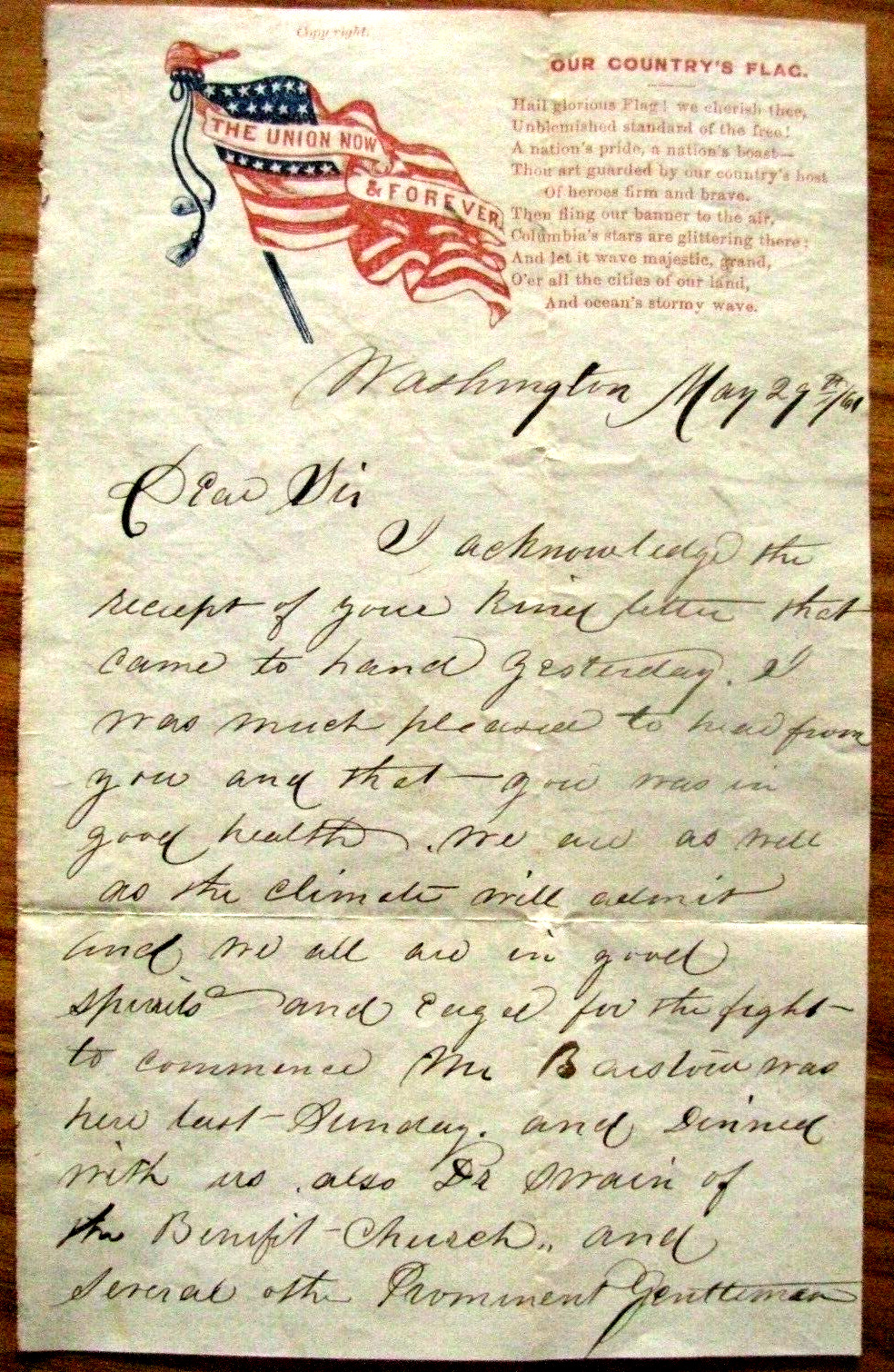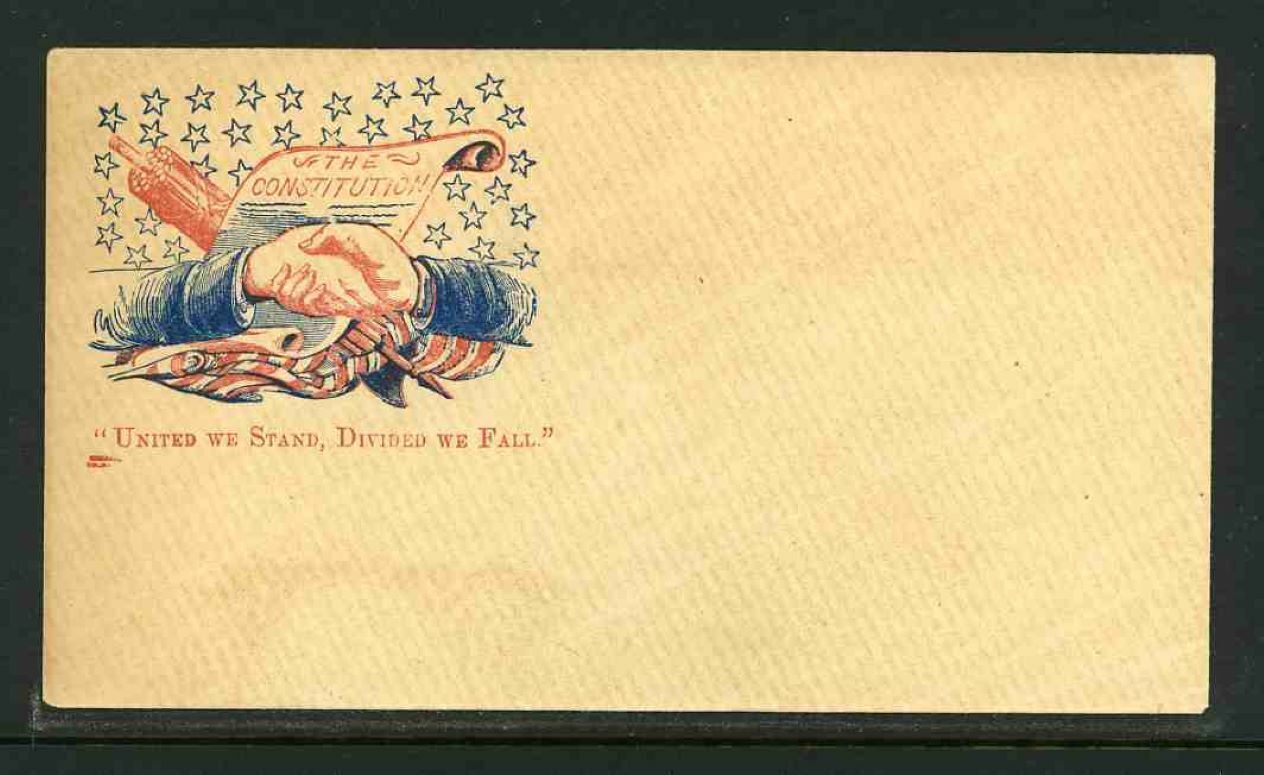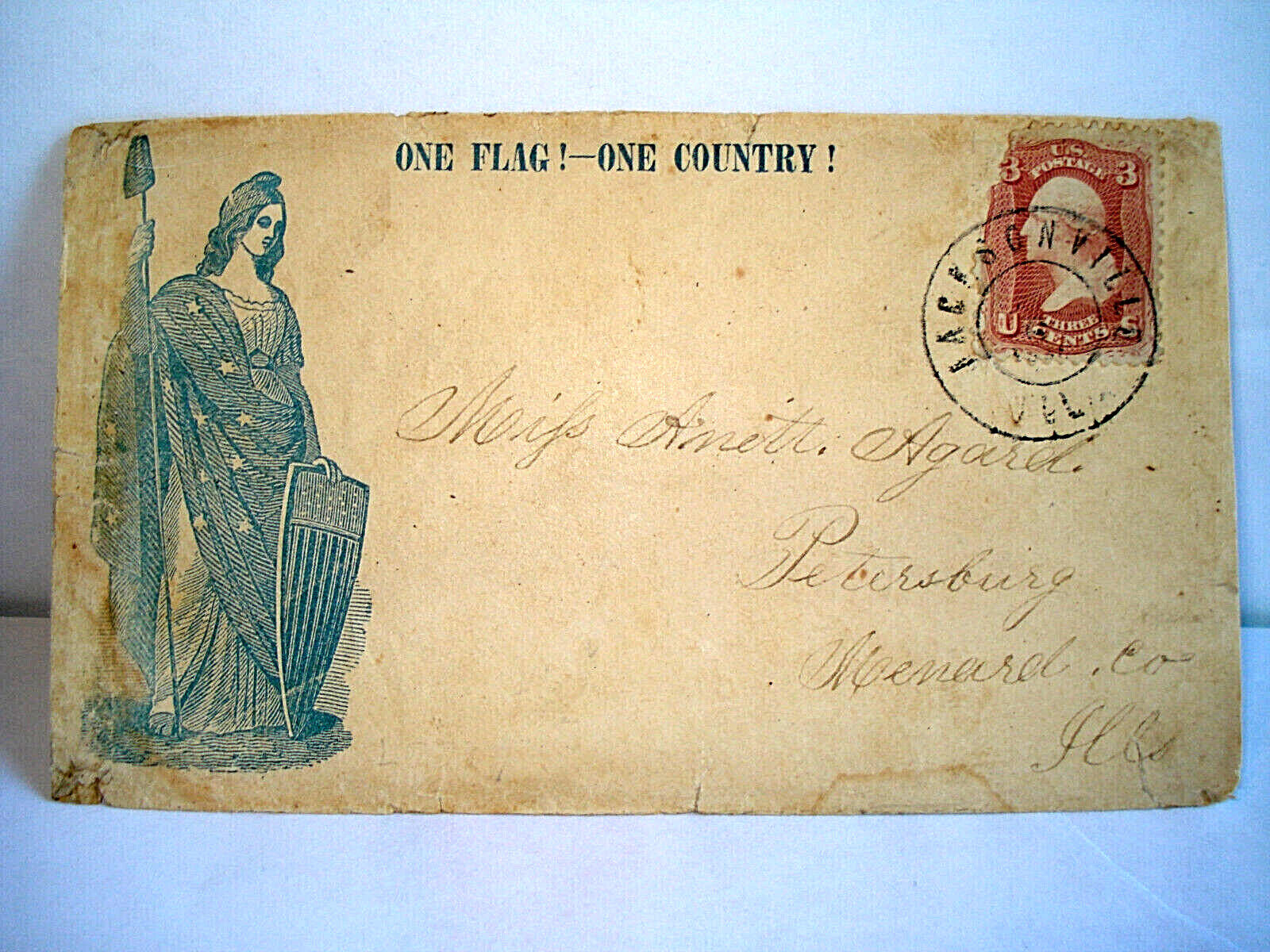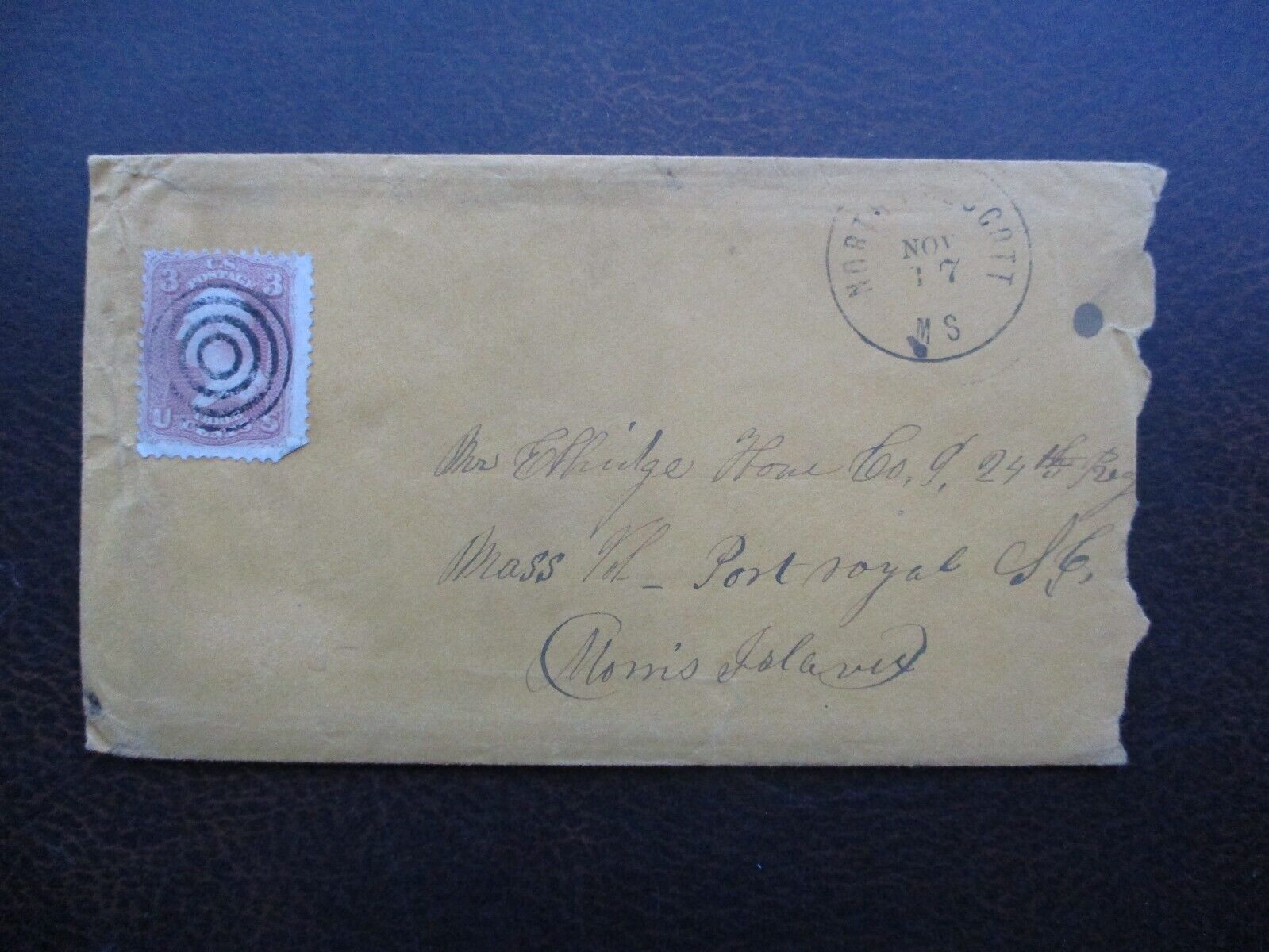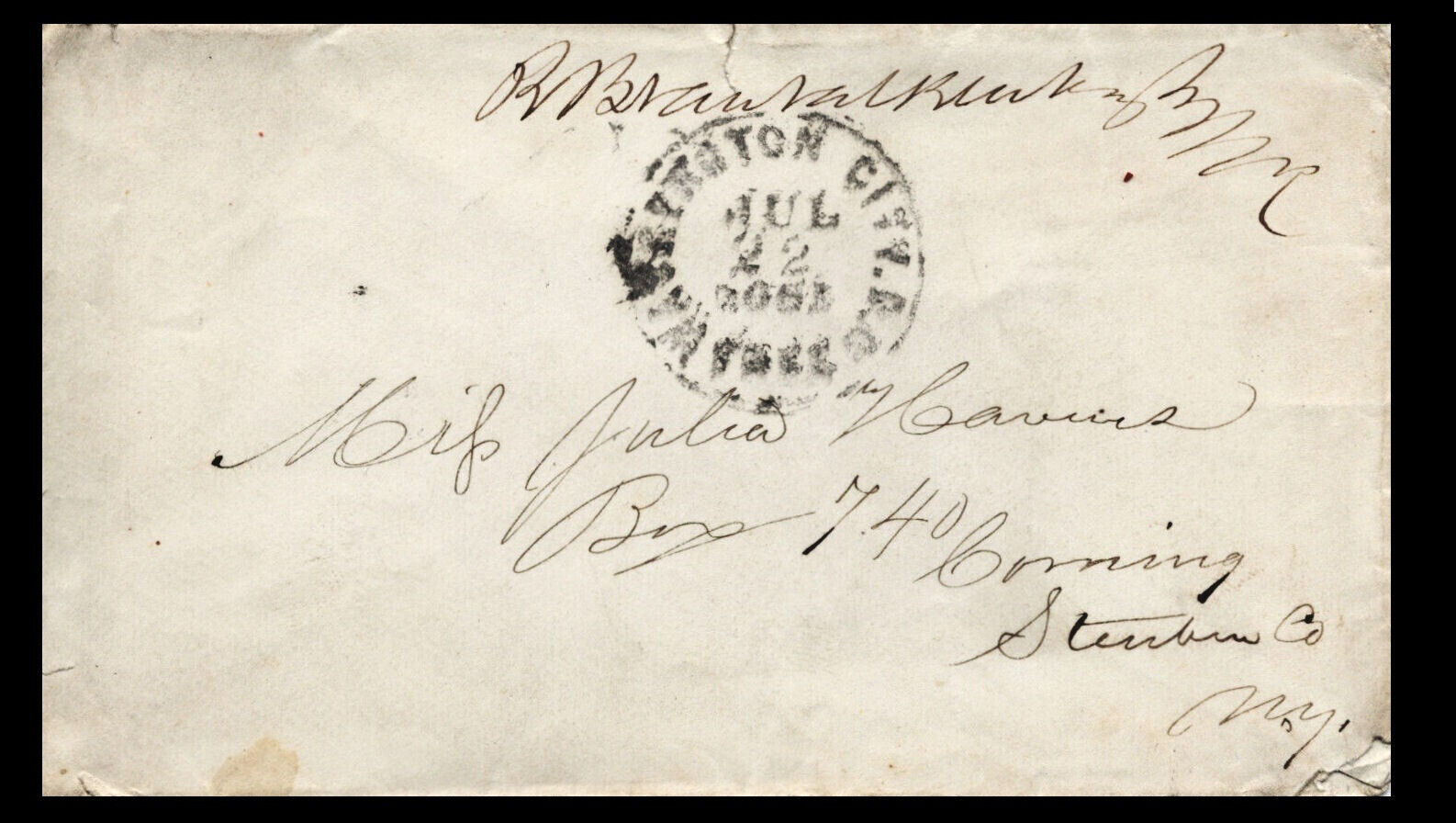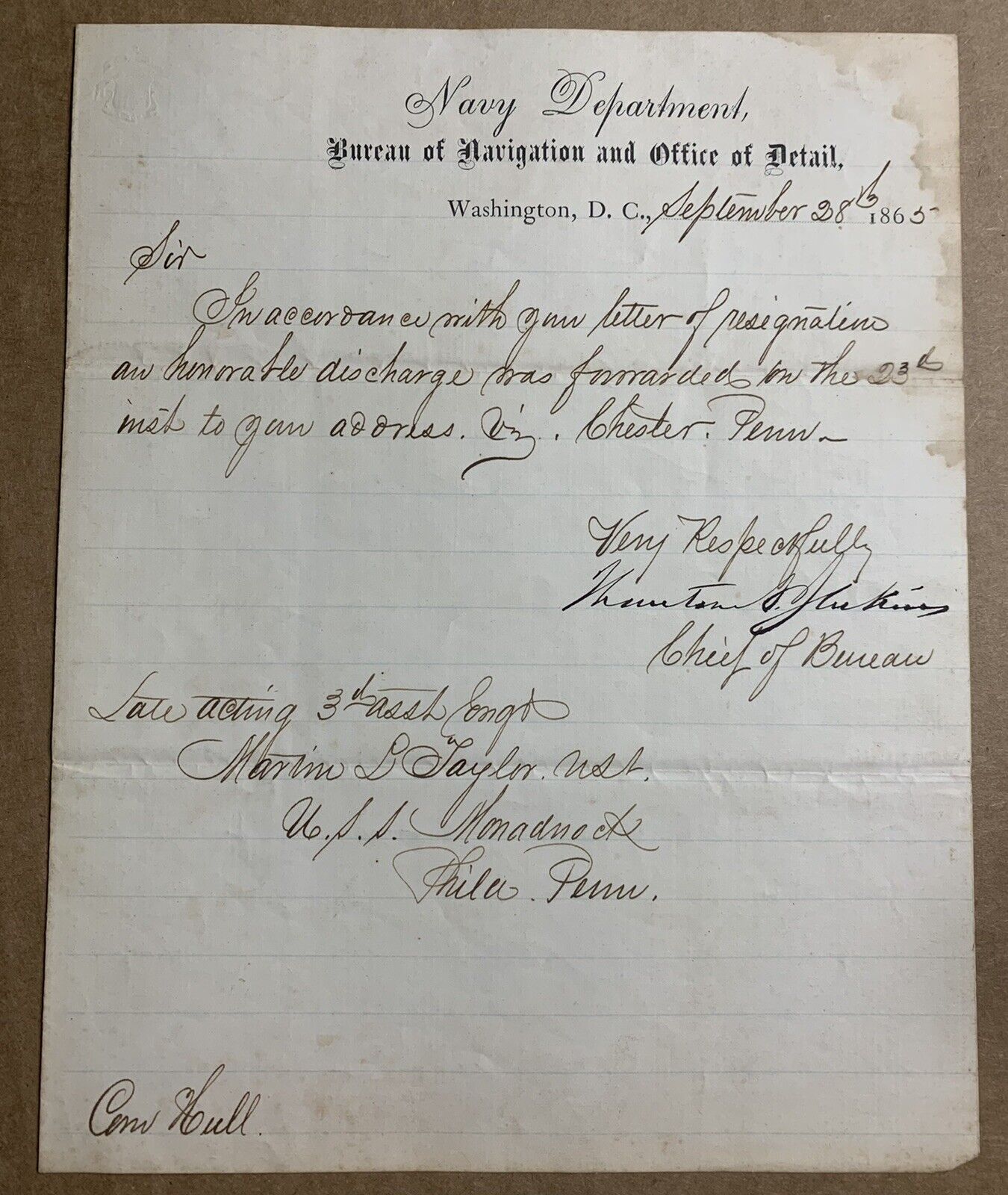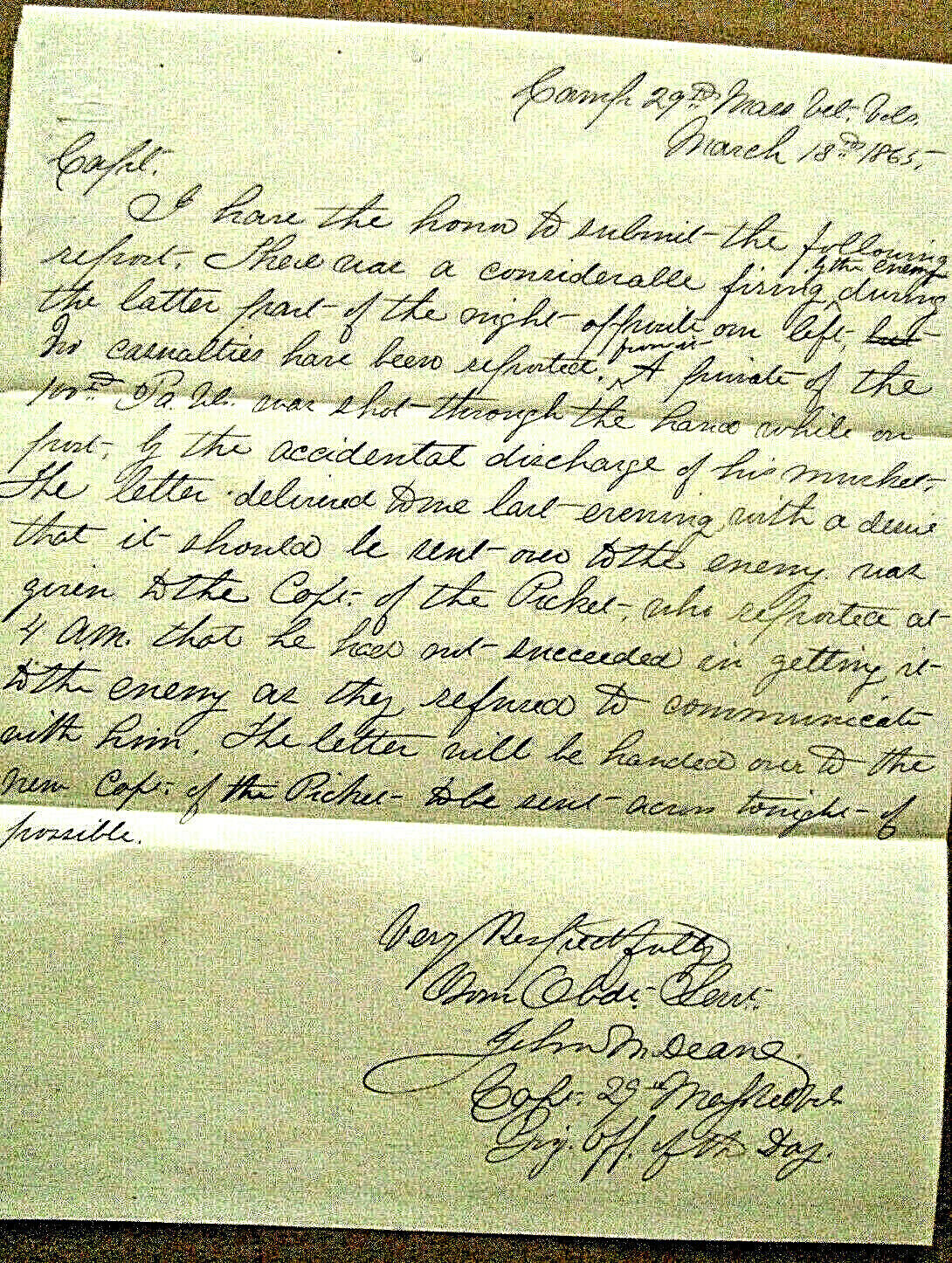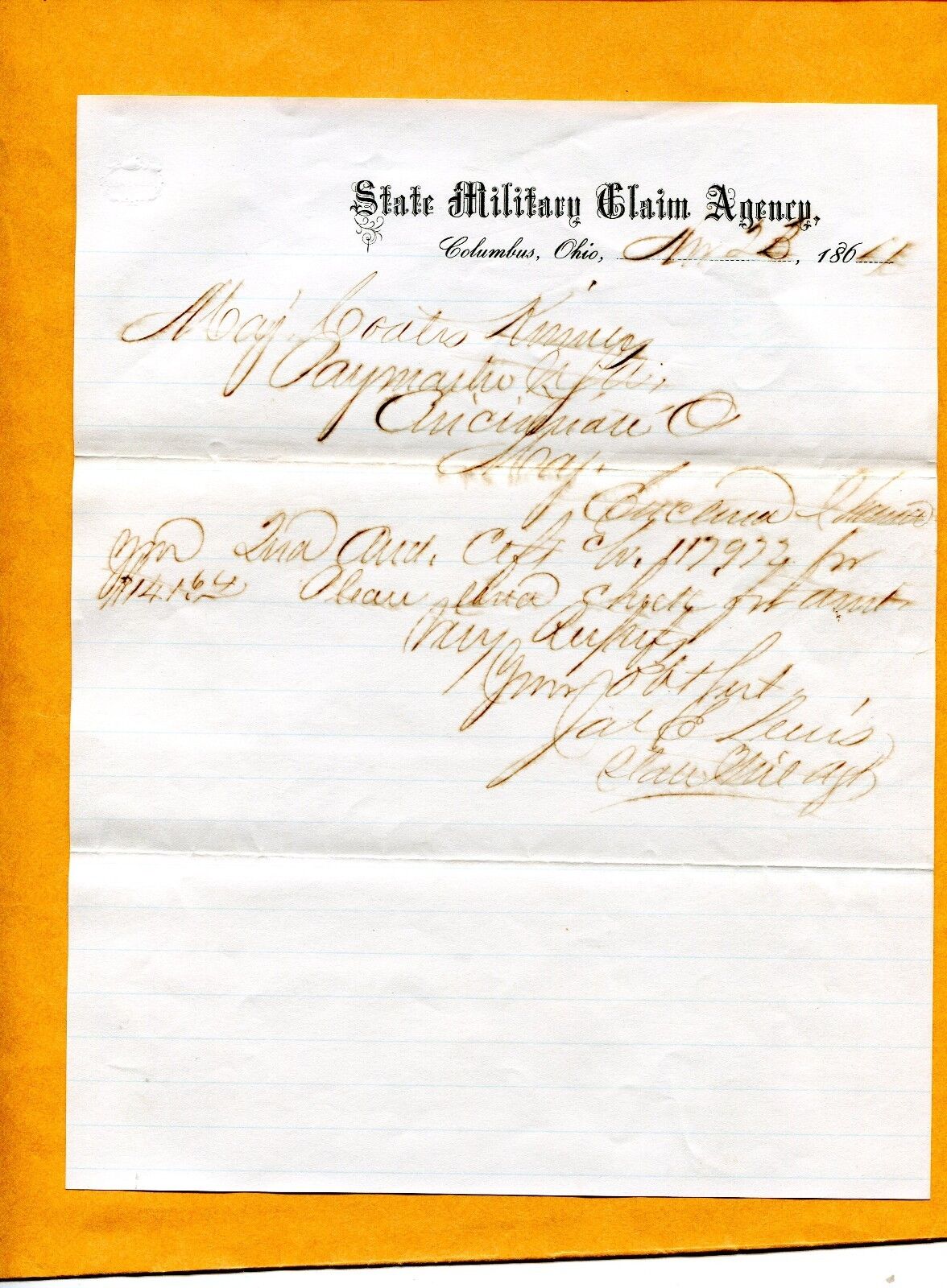-40%
TO NEWPORT BARRACKS,NEWPORT KENTUCKY,SENT FROM LOUISVILLE JUNE 23 1864
$ 13.2
- Description
- Size Guide
Description
Newport Barracks was an important crossroads during the warwhere Union enlistees passed through and Confederate prisoners
were held. see below.
dockets at left in pencil showing dates.
f-vf cover. stamp partially torn away bottom right.
(at this time Petersburg and Atlanta Campaign
were going on
elsewhere)
add .00 for 1st class/Insured to U.S....
Our Rich History: Newport, a gateway to the South during Civil War; loyalties were divided, Newport Barracks was union
Mar 16th, 2020
By Steve Preston
Special to NKyTribune
The state of Kentucky was in a conundrum during the American Civil War. On the one hand, it was the birthplace of the Great Emancipator, President Abraham Lincoln. On the other hand, although it officially remained in the Union as a neutral “border state,” Kentuckians’ loyalties were divided among Union and Confederate beliefs. In a letter to O.H. Browning, Lincoln expressed his feelings about the vital role of Kentucky: “I think to lose Kentucky is nearly the same as to lose the whole game.”
The city of Newport was also in an uncomfortable position at the outbreak of the American Civil War. As a gateway to the South and now a neutral, border city, it had economic ties to both northern and southern markets. For transportation of goods, the Ohio and Mississippi Rivers provided cost-effective access to southern markets. Railroads and canals in Ohio provided access to northern and eastern markets. War could drastically disrupt business. It would also disrupt friendships and families before it was all over.
Newport Barracks. Source: Ballou’s Pictorial, December 20, 1856, p. 393.
Immigration, population growth, and industrialization tied Newport more to Cincinnati than to the rest of the Bluegrass. News outlets for Northern Kentucky were principally based out of Cincinnati rather than from the interior of the state. This led to a Union slant, especially in a county where there were only 115 slaves, “a little more than one-half of 1% of the total population of 20,909” (
Tenkotte, William Shreve Bailey
).
The citizens of Newport were, nonetheless, divided in their loyalties. For example, lists were provided to local newspapers questioning the loyalties of neighbors. Others did not hide their outspoken loyalties to the South. One of those outspoken Southern supporters had married into Newport’s first family, the Taylors. Local lawyer and politician, George Baird Hodge, married Keturah Moss Tibbatts, granddaughter of city matriarch, Keturah Moss Taylor. Hodge, a Democrat, had served in the Kentucky House of Representatives and actively campaigned for Kentucky’s John Breckinridge in the wild Presidential Election of 1860. At the outbreak of war, Hodge elected to enlist on the Confederate side. This stood in stark contrast to the history of his wife’s family, who had donated the land for the Newport Barracks, a loyal United States Military Installation during the American Civil War.
The Newport Barracks saw its share of Union enlistees from Kentucky. According to The Encyclopedia of Northern Kentucky, over 1,013 men from Campbell County enlisted in the Union Army. This is in addition to the many who answered the call for a Home Guard. Other Campbell County men answered the call of the Confederacy to fight. One notable rebel was Benjamin Beall. He, along with approximately 26 other men from the Alexandria area, enlisted in the Confederate Army. They later went to Virginia to join the 10th Kentucky Cavalry (CSA).
Newport Barracks itself was a flurry of action for the Union cause. The 15th Regiment was stationed there. Other Union units were stationed to the north at Camp Dennison, Ohio. As a recruiting depot, the Barracks processed and mobilized soldiers in cooperation with recruiting depots across the river in Cincinnati. The soldiers who passed through Newport Barracks would see duty near and far. Some would serve with Sherman in the East, others defending Louisville, still others here in the area defending Cincinnati during the 1862 Siege of Cincinnati (Preston,
Confederates withdraw
AND
the Black Brigade
), as well as Morgan’s 1862 and 1863 raids through the area.
The Barracks would also serve as a hospital for wounded soldiers. The first large influx of wounded arrived shortly after the Battle of Shiloh. Newport Barracks, Kentucky’s Forgotten Military Installation documents that the Barracks and Covington Hospital received 102 men wounded in the battle. Newport Barracks saw some of the worst casualties. Many did not survive. The son of post-doctor N.C. Shaler recalled; “In the Barracks Hospital men were constantly dying…” He further relates that he would follow the funeral processions for the soldiers and march back home with them to the tune of “Goodby Willie.”
Newport Barracks also served as a prison for captured Confederate soldiers and those deemed disloyal to the Union. Cincinnati was the headquarters for the Department of Ohio Military District. General Ambrose Burnside, its commander, wanted to keep the Cincinnati area’s population of southern sympathizers silent and unable to influence the populace of the region. Burnside issued General Order No. 38. This order made it illegal to publicly express sympathy for the Confederacy or to make any pronouncement against the United States Government.
As a result of his violating General Order No. 38, the most famous person to be held for some time at Newport was an Ohio politician, Clement Vallandigham. He was the leader of the Democratic Party in Ohio and had served in the United States House of Representatives. Vallandigham opposed the war and was a leader of a faction of the party known as “Peace Democrats.” Being in the Union with Southern sympathies, they also garnered the name, “Copperheads.” Vallandigham would be briefly held at Newport while awaiting trial. Sentenced to prison at a military trial, his sentence was commuted by President Lincoln to being deported to the Confederacy. He would later spend time in exile in Canada, where he ran in-absentia for Governor of Ohio in 1863.
With Lee’s surrender at Appomattox, the American Civil War drew to a close.
Defensive positions in and around Northern Kentucky were removed and filled in, excess weaponry and men were removed from the military rolls, and Newport and other Northern Kentucky cities began to resume a normal life. Men who fought for both sides returned home and began reintegrating into peacetime society. While some in the community sought to punish those who served or sympathized with the Confederacy, for the most part, life resumed the normalcy it had before wartime. George Hodge returned to his law practice in Newport. Captain Benjamin Beall surrendered in Covington, April 30, 1865. Dr. Shaler’s son, instead of following military funerals, could play in his father’s vineyard now that “Shaler’s Battery” was abandoned of artillery.
Later, this site would be added to the grounds of Evergreen Cemetery in Southgate, Kentucky. Many a veteran of the conflict is buried there, including Newport’s Medal of Honor recipient, William Horsfall (1847-1922).
Steve Preston is the Education Director and a Curator of History at Heritage Village Museum. He received his MA in Public History from Northern Kentucky University.


